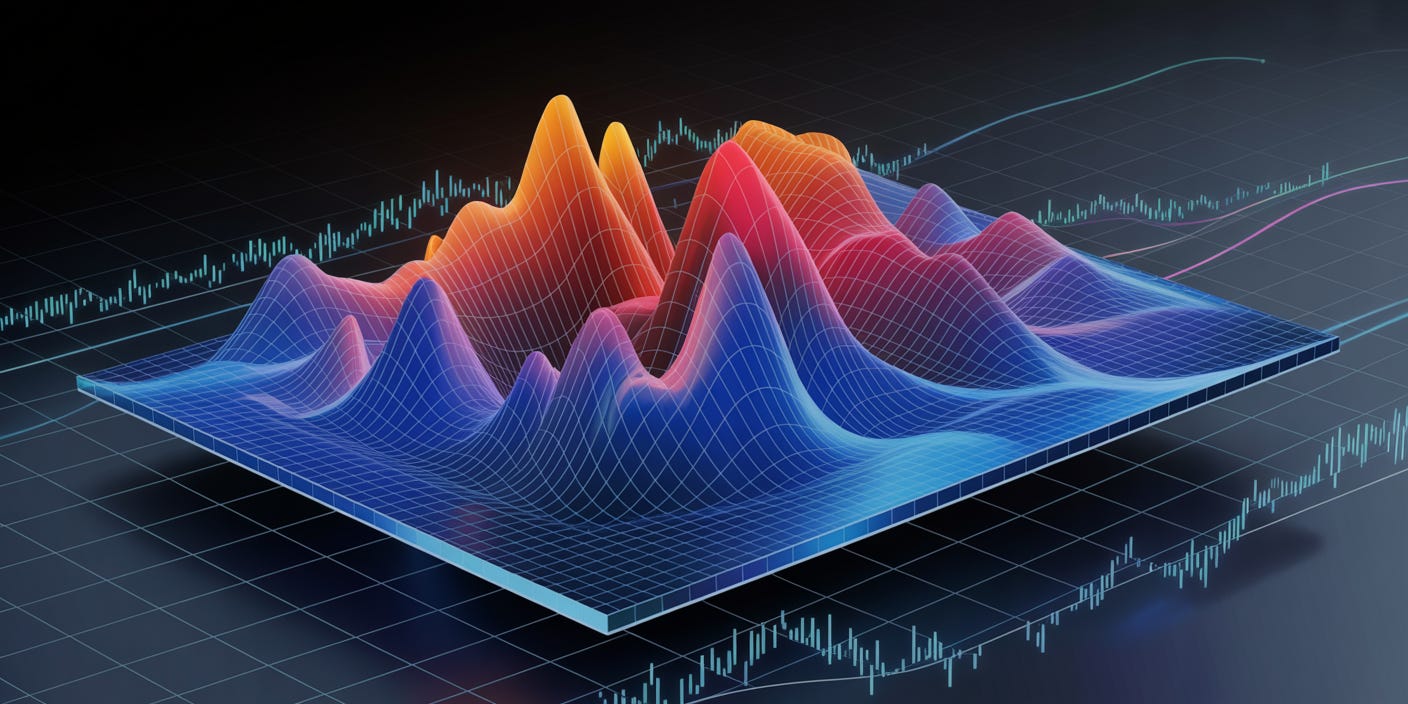How CI Volatility Thinks About Predicting Volatility
Our approach to volatility forecasting creates a framework that investors and family offices can trust.
At CI Volatility, we approach volatility forecasting with the mindset that every forecast must survive multiple filters:
1. We Don’t Rely on Widely-Known Metrics Alone
If a metric is on every institutional dashboard (like put/call ratios) its edge is already gone.
The more people watch the same number, the less information it contains.
We still monitor the classics such as realized volatility, VIX futures curve, RSI, trading volume, VRP, etc… but we treat them as context, not signals. The real alpha comes from how these interact together: how VIX behaves relative to VX1 and VX2, relative to put/call ratios, relative to RSI, relative to VRP etc...
Forecasting volatility is not about having one holy grail signal. It’s about detecting interactions between a large number of signals that the crowd hasn’t yet noticed.
2. We Avoid Lookahead Bias
Many “predicting models” use data that wouldn’t have existed in real-time.
We simulate forecasts using only the information that traders actually had at that moment.
For example, a signal that triggers based on “the next day’s information” can’t be tested as if the information were known in real time.
To avoid it, you must make sure your model only “sees” the data that would have been available at that exact moment in time. No peeking ahead.
3. We Always Compare to a Baseline
Most prediction models aren’t actually better than simple baselines.
Imagine a trader who builds an algorithm that “beats the market” by making 25% a year trading NVDA. He’s thrilled and convinced he’s a genius until he checks and sees that simply buying and holding NVDA over the same period would have made more than 25%, with zero complexity.
That’s the danger of skipping the baseline test. You need to compare against the simplest possible alternative.
4. We Avoid Survivorship Bias
Survivorship bias happens when you test a strategy only on assets that still exist, while ignoring the ones that failed, delisted, or collapsed along the way.
If you only look at today’s tickers, your data is already biased because you’re automatically filtering for the survivors. It’s like studying only the people who made it out of the jungle and concluding the trip was safe.
This was a short, high-level overview of how CI Volatility thinks about creating our signals. Many important aspects weren’t covered here, but just a glimpse into how we think.


